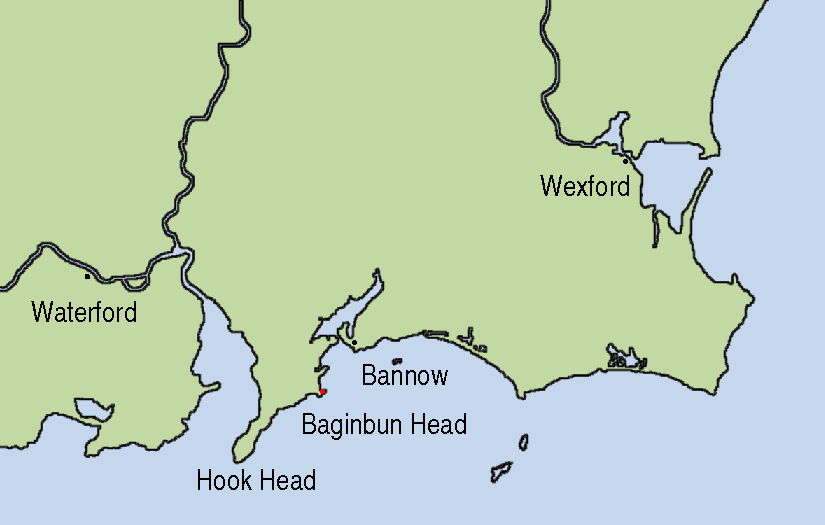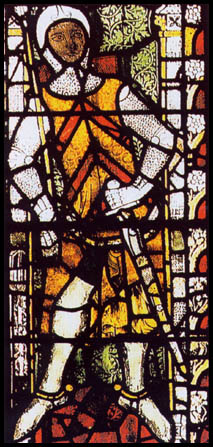|
Basilia De Clare
Basilia de Clare (fl. 1173–1201) was an Anglo-Norman noblewoman from the de Clare family. She married a supporter of her brother Richard de Clare known as "Strongbow". Life She was the daughter of Gilbert de Clare, 1st Earl of Pembroke and Isabel de Beaumont, and she had a brother named Richard de Clare. She must have been born in 1148 or before as her father died and her brother inherited his title early in that year. Her brother was about 18 years old, and Richard inherited the title 'count of Strigoil' Earl of Pembroke Earl of Pembroke is a title in the Peerage of England that was first created in the 12th century by King Stephen of England. The title, which is associated with Pembroke, Pembrokeshire in West Wales, has been recreated ten times from its origin .... It is probable that this title was not recognized at Henry II's coronation in 1154.M. T. Flanagan, 'Clare, Richard fitz Gilbert de, second earl of Pembroke (c.1130–1176)', ''Oxford Dictionary of National Biogr ... [...More Info...] [...Related Items...] OR: [Wikipedia] [Google] [Baidu] |
Raymond Fitz William
Raymond (or Redmond) Fitz William Fitz Gerald (died 1185–1198), nicknamed ''Le Gros'' ("the Large"), was a Cambro-Norman commander during the Norman invasion of Ireland. Raymond was among the first of a small band of Norman knights who landed on the South coast of Ireland before being reinforced by a larger force led by Richard de Clare, 2nd Earl of Pembroke. He was active consolidating Norman rule over Ireland before he retired to his estates in Waterford where he died in the late 12th century. Family and youth Raymond grew up in Wales, and was a grandson of Princess Nest ferch Rhys, daughter of Rhys ap Tewdwr, the last independent Prince of South Wales. His father was William FitzGerald, Lord of Carew. Career He was sent by Strongbow to Ireland in 1170, and landed at Baginbun Head at the Hook Peninsula, near Waterford, where he was besieged in his entrenchments by the combined Irish and Ostmen, whom he repulsed. Although vastly outnumbered in this battle, (his cousi ... [...More Info...] [...Related Items...] OR: [Wikipedia] [Google] [Baidu] |
Richard De Clare, 2nd Earl Of Pembroke
Richard de Clare, 2nd Earl of Pembroke (of the first creation), Lord of Leinster, Justiciar of Ireland (113020 April 1176), also known as Richard FitzGilbert, was an Anglo-Norman nobleman notable for his leading role in the Anglo-Norman invasion of Ireland. Like his father, Richard fitz Gilbert has since become commonly known by his nickname Strongbow (Norman French: ''Arc-Fort''), which may be a mistranscription or mistranslation of " Striguil". His son Gilbert de Striguil (or de Strigoil) died unmarried before 1189 and the earldom passed via Richard's daughter Isabel to her spouse William Marshall. Cognomen (nickname) Richard's nickname Strongbow has become the name he is best known by, but it is unlikely that he was called that during his lifetime. Nicknames of other Cambro-Norman and Norman lords were exclusively Norman-French as the nobility spoke French and, with few exceptions, official documents were written in Latin during this period. The confusion seems to have aris ... [...More Info...] [...Related Items...] OR: [Wikipedia] [Google] [Baidu] |
De Clare
The House of Clare was a prominent Anglo-Norman noble house that held at various times the earldoms of Pembroke, Hertford and Gloucester in England and Wales, as well as playing a prominent role in the Norman invasion of Ireland. They were descended from Richard Fitz Gilbert, Lord of Clare (1035-1090), a kinsman of William the Conqueror who accompanied him into England during the Norman conquest of England. As a reward for his service, Richard was given lands in Suffolk centred on the village of Clare. As a result, Richard and his descendants carried the name of ‘de Clare’ or ‘of Clare’. Origins The Clare family derived in the male line from Gilbert, Count of Brionne, whose father Geoffrey, Count of Eu was an illegitimate son of Richard I, Duke of Normandy by an unknown mistress. Gilbert de Brionne was one of the guardians of William II, who became Duke of Normandy as a child in 1035. When Gilbert was assassinated in 1039 or 1040, his young sons Baldwin and Rich ... [...More Info...] [...Related Items...] OR: [Wikipedia] [Google] [Baidu] |
Gilbert De Clare, 1st Earl Of Pembroke
Gilbert fitz Gilbert de Clare (6 January 1148), was created Earl of Pembroke in 1138.He was called 'Strongbow' but his son Richard is much more readily associated with that nickname. Life Born at Tonbridge, Gilbert de Clare was a son of Gilbert Fitz Richard de Clare and Alice de Claremont. He started out without land and wealth of his own but was closely related to very powerful men, specifically his uncles Walter de Clare and Roger de Clare. In 1136, Gilbert fitz Gilbert led an expedition against Exmes and burned parts of the town, including the church of Notre Dame, but was interrupted by the forces of William III, Count of Ponthieu, and escaped the resulting melee only after suffering heavy losses. Gilbert was a Baron, that is, a tenant-in-chief in England, and inherited the estates of his paternal uncles, Roger and Walter, which included the baronies and castles of Bienfaite and Orbec in Normandy. He held the lordship of Nether Gwent and the castle of Striguil (later Ch ... [...More Info...] [...Related Items...] OR: [Wikipedia] [Google] [Baidu] |
Earl Of Pembroke
Earl of Pembroke is a title in the Peerage of England that was first created in the 12th century by King Stephen of England. The title, which is associated with Pembroke, Pembrokeshire in West Wales, has been recreated ten times from its original inception. Due to the number of creations of the Earldom, the original seat of Pembroke Castle is no longer attached to the title. , the current holder of the earldom is William Herbert, 18th Earl of Pembroke, which is the 10th creation of the title. For the past 400 years, his family's seat has been Wilton House, Wiltshire. The Earls of Pembroke also hold the title Earl of Montgomery, created for the younger son of Henry Herbert, 2nd Earl of Pembroke before he succeeded as the 4th Earl in 1630. The current Earls of Pembroke also carry the subsidiary titles: Baron Herbert of Cardiff, of Cardiff in the County of Glamorgan (1551), Baron Herbert of Shurland, of Shurland in the Isle of Sheppey in the County of Kent (1605), and Baron Herbe ... [...More Info...] [...Related Items...] OR: [Wikipedia] [Google] [Baidu] |
12th-century Births
1 (one, unit, unity) is a number representing a single or the only entity. 1 is also a numerical digit and represents a single unit of counting or measurement. For example, a line segment of ''unit length'' is a line segment of length 1. In conventions of sign where zero is considered neither positive nor negative, 1 is the first and smallest positive integer. It is also sometimes considered the first of the infinite sequence of natural numbers, followed by 2, although by other definitions 1 is the second natural number, following 0. The fundamental mathematical property of 1 is to be a multiplicative identity, meaning that any number multiplied by 1 equals the same number. Most if not all properties of 1 can be deduced from this. In advanced mathematics, a multiplicative identity is often denoted 1, even if it is not a number. 1 is by convention not considered a prime number; this was not universally accepted until the mid-20th century. Additionally, 1 is the ... [...More Info...] [...Related Items...] OR: [Wikipedia] [Google] [Baidu] |
13th-century Deaths
The 13th century was the century which lasted from January 1, 1201 ( MCCI) through December 31, 1300 ( MCCC) in accordance with the Julian calendar. The Mongol Empire was founded by Genghis Khan, which stretched from Eastern Asia to Eastern Europe. The conquests of Hulagu Khan and other Mongol invasions changed the course of the Muslim world, most notably the Siege of Baghdad (1258), the destruction of the House of Wisdom and the weakening of the Mamluks and Rums which, according to historians, caused the decline of the Islamic Golden Age. Other Muslim powers such as the Mali Empire and Delhi Sultanate conquered large parts of West Africa and the Indian subcontinent, while Buddhism witnessed a decline through the conquest led by Bakhtiyar Khilji. The Southern Song dynasty would begin the century as a prosperous kingdom but would eventually be invaded and annexed into the Yuan dynasty of the Mongols. The Kamakura Shogunate of Japan would be invaded by the Mongols. Goryeo resi ... [...More Info...] [...Related Items...] OR: [Wikipedia] [Google] [Baidu] |
Year Of Birth Unknown
A year or annus is the orbital period of a planetary body, for example, the Earth, moving in its orbit around the Sun. Due to the Earth's axial tilt, the course of a year sees the passing of the seasons, marked by change in weather, the hours of daylight, and, consequently, vegetation and soil fertility. In temperate and subpolar regions around the planet, four seasons are generally recognized: spring, summer, autumn and winter. In tropical and subtropical regions, several geographical sectors do not present defined seasons; but in the seasonal tropics, the annual wet and dry seasons are recognized and tracked. A calendar year is an approximation of the number of days of the Earth's orbital period, as counted in a given calendar. The Gregorian calendar, or modern calendar, presents its calendar year to be either a common year of 365 days or a leap year of 366 days, as do the Julian calendars. For the Gregorian calendar, the average length of the calendar year ( ... [...More Info...] [...Related Items...] OR: [Wikipedia] [Google] [Baidu] |
Year Of Death Unknown
A year or annus is the orbital period of a planetary body, for example, the Earth, moving in its orbit around the Sun. Due to the Earth's axial tilt, the course of a year sees the passing of the seasons, marked by change in weather, the hours of daylight, and, consequently, vegetation and soil fertility. In temperate and subpolar regions around the planet, four seasons are generally recognized: spring, summer, autumn and winter. In tropical and subtropical regions, several geographical sectors do not present defined seasons; but in the seasonal tropics, the annual wet and dry seasons are recognized and tracked. A calendar year is an approximation of the number of days of the Earth's orbital period, as counted in a given calendar. The Gregorian calendar, or modern calendar, presents its calendar year to be either a common year of 365 days or a leap year of 366 days, as do the Julian calendars. For the Gregorian calendar, the average length of the calendar year (the mea ... [...More Info...] [...Related Items...] OR: [Wikipedia] [Google] [Baidu] |
12th-century Irish Women
1 (one, unit, unity) is a number representing a single or the only entity. 1 is also a numerical digit and represents a single unit of counting or measurement. For example, a line segment of ''unit length'' is a line segment of length 1. In conventions of sign where zero is considered neither positive nor negative, 1 is the first and smallest positive integer. It is also sometimes considered the first of the infinite sequence of natural numbers, followed by 2, although by other definitions 1 is the second natural number, following 0. The fundamental mathematical property of 1 is to be a multiplicative identity, meaning that any number multiplied by 1 equals the same number. Most if not all properties of 1 can be deduced from this. In advanced mathematics, a multiplicative identity is often denoted 1, even if it is not a number. 1 is by convention not considered a prime number; this was not universally accepted until the mid-20th century. Additionally, 1 is the s ... [...More Info...] [...Related Items...] OR: [Wikipedia] [Google] [Baidu] |




